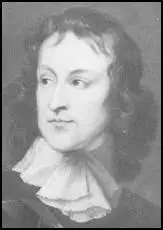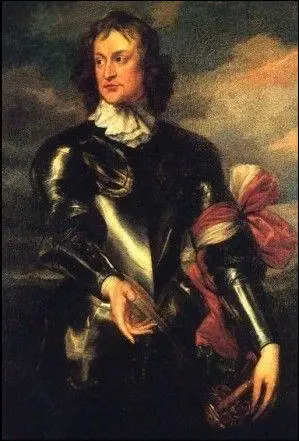John Lambert

John Lambert was born in Yorkshire in 1619. He studied law but joined the Parliamentary forces on the outbreak of the Civil War. He served under General Thomas Fairfax and in 1643 was given command of the cavalry in Yorkshire. Lambert fought at Hull (1643), Nantwich (1644), Marston Moor (1644) and Oxford (1646).
In July 1647 Lambert was placed in command of the Northern Forces. Later that year he worked closely with Henry Ireton against the Presbyterians and the Levellers.
Lambert also played a major role in the campaigns against the Scots. He was wounded at Musselburgh (July, 1650) but recovered and defeated Sir John Brown at Inverkeithing on 20th July, 1651. Lambert also fought at Worcester, the last great battle of the Civil War.
In 1652 Oliver Cromwell rewarded Lambert for his many military victories by appointing him Deputy Lord Lieutenant of Ireland. When Cromwell closed down the House of Commons in 1655, he imposed military rule. England was divided into eleven districts. Each district was run by a Major General. This included Lambert, who was based in York, and his responsibilities included maintaining order, collecting taxes, granting poor relief and imposing Puritan morality.
Lambert was opposed to Cromwell being appointed Lord Protector. He refused to take the oath of loyalty and resigned from office. Lambert retired to Wimbledon where he spent his time painting and gardening.
In 1659 Lambert joined John Desborough and Charles Fleetwood to help remove Richard Cromwell as Lord Protector of the Commonwealth. Parliament and the leaders of the army now began arguing amongst themselves about how England should be ruled. General George Monck, the officer in charge of the English army based in Scotland, decided to take action, and in 1659 he marched on London.

When Monck arrived he reinstated the House of Lords and the Parliament of 1640. Royalists were now in control of Parliament. Monck now contacted Charles II, who was living in Holland. Charles agreed that if he was made king he would pardon all members of the parliamentary army and would continue with the Commonwealth's policy of religious toleration.
Lambert attempted to arouse resistance to the restoration of the monarchy. He marched against George Monck in November 1659 but his army deserted and he was imprisoned in the Tower of London. Later he was transferred to Guernsey.
After spending 24 years in prison John Lambert died on Drake's Island in February, 1684.

